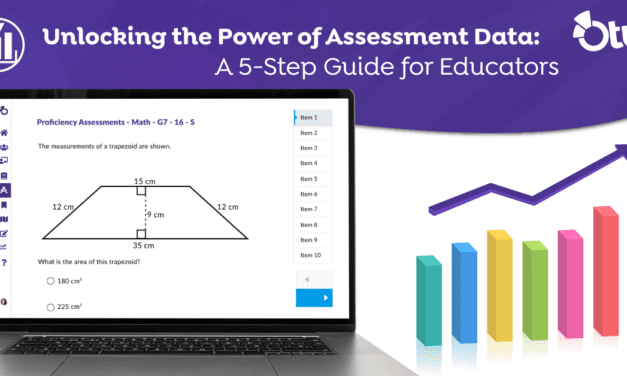While educators encourage teachers and students to have a growth mindset when it comes to teaching and learning, we need to consider how fixed mindset comments—rather than growth mindset comments, made by administrators—adversely impact teachers.
From time to time, school or district administrators tell us that their teachers “aren’t there”. This most often happens after we ask administrators to describe how teachers in their schools use data to inform instruction. Administrators will say that while they wish teachers used data more frequently, the teachers “aren’t there”.
My favorite educational thought leader (also my wife), Lisa Westman, weighs in on the “our teachers ‘aren’t there’ mindset when it comes to using data:
“Many teachers are there, but the reality is that they are often frustrated that it takes so long for them to get data from administrators. And even if some teachers “aren’t there”, their students are ready and waiting. It is the teachers’ obligation to determine instruction and monitor student learning based on students’ needs, and using current data is an essential component to make that happen successfully.”
Here is the good news. The three most common reasons administrators believe their teachers “aren’t there”, actually have little to do with teacher data readiness and everything to do with data accessibility. And,—even better news—there are remedies for all three of these issues:
#1: Providing teachers with access to data is nearly impossible
A wise professor of mine once noted that “schools are data rich and information poor.” Data can be found everywhere: your SIS, state assessments, district-level assessments, classroom assessments, the dozens of one-off EdTech apps your teachers use, the anecdotal events that happen each day… all of these data points are scattered across a myriad of systems. Organizing all of this data for your teachers is time-consuming and the processes to streamline information are inefficient, resulting in the de-prioritization of data collection and analysis.
Remedy: Streamline the technologies that are used in your school. Think about all of the technology tools that generate data and identify ways that teachers and school leaders could all use a common platform that is able to efficiently visualize data in real-time. Note: this is why we built Otus.
#2: Data Days occur too seldom to be systemically effective
Let’s be honest. Coordinating Data Days is expensive and time-consuming. Hiring substitutes to cover classes so that teachers can spend a chunk of time analyzing data is costly (both financially and to instructional time for students)! Additionally, by the time Data Days roll around, teachers might be analyzing data that is no longer relevant to their classrooms (i.e., assessment data from a test that was given to students months ago). Therefore, Data Days become special events that happen only once or twice per year, compiling and analyzing data that may already be outdated. Real-time views of student data, which would provide the most effective insights, do not exist without the right tools.
Remedy: Using a solution that enables instantaneous data input and analysis, which in turn improves educator efficiency, is at the heart of every successful instructional environment. Data is more than just summative test results; it is a powerful classroom resource that informs instruction on an ongoing basis.
#3: Choosing the right data for teachers is an ongoing challenge
Are state test scores the most important data for teachers to analyze? What about student discipline trends? Attendance? Or is it student performance on formative assessments? Maybe it’s a third-party benchmark assessment?
Arguably, all of these data points (and many more) are important for teachers to use when thinking about student growth. The challenge is being able to get all of this data to teachers in a way that they can use it.
Remedy: Let teachers determine which data is most useful for the results they want to achieve at each point during the school year. Data can change behaviors as long as the data is relevant, timely, and presented in a way that is easy to understand.
So the next time you think about saying, “our teachers aren’t there” ask yourself how you can create conditions to get them there. Or better yet, include teachers as partners in the decision-making process so you can all share common goals and get “there” together.





